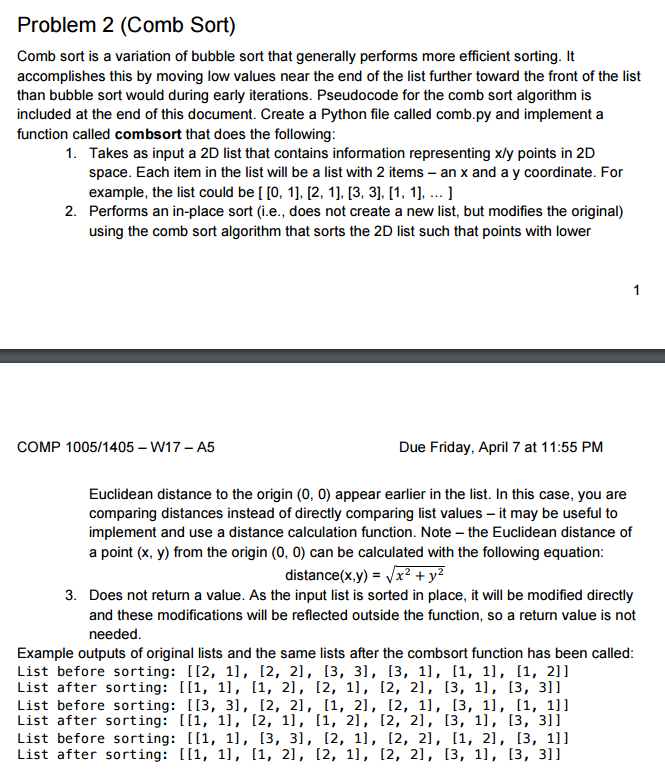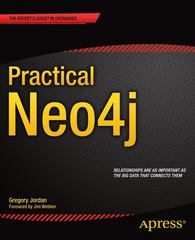Answered step by step
Verified Expert Solution
Question
1 Approved Answer
Can I get help with the full code for this python question? Problem 2 (Comb Sort) Comb sort is a variation of bubble sort that

Can I get help with the full code for this python question?
Problem 2 (Comb Sort) Comb sort is a variation of bubble sort that generally performs more efficient sorting. It accomplishes this by moving low values near the end of the list further toward the front of the list than bubble sort would during early iterations. Pseudocode for the comb sort algorithm is included at the end of this document. Create a Python file called comb.py and implement a function called combsort that does the following 1. Takes as input a 2D st that contains information representing xly points in 2D space. Each item in the list will be a list with 2 items an x and a y coordinate. For example, the list could be [0, 1], [2, 1], [3, 3], [1, 1], 2. Performs an in-place sort (i.e., does not create a new list, but modifies the original) using the comb sort algorithm that sorts the 2D list such that points with lower COMP 1005/1405 W17 A5 Due Friday, April 7 at 11:55 PM Euclidean distance to the origin (0, 0) appear earlier in the list. In this case, you are comparing distances instead of directly comparing list values it may be useful to implement and use a distance calculation function. Note -the Euclidean distance of a point (x, y) from the origin (0, 0) can be calculated with the following equation: distance(x,y) Vx2 y2 3. Does not return a value. As the input list is sorted in place, it will be modified directly and these modifications will be reflected outside the function, so a return value is not needed Example outputs of original lists and the same lists after the combsort function has been called List before sorting: [12, 11, 12, 21 [3, 3], 13, 1], [1, 1], [1, 211 List after sorting: [[1, 1], [1, 2], [2, 11, 12, 21 13, 11, 13, 311 List before sorting: [13, 3] [2, 21 [1, 21 12, 11 13, 11 [1, 1] List after sorting: 1 1], 12, 1], [1 21 [2, 21 13, 11 13, 31 List before sorting: [[1, 11, 13, 3], 12, 1], 12, 21 [1, 2], [3, 1] List after sorting: 1 1], [1, 2], [2, 1], [2, 21 13, 11 13, 311Step by Step Solution
There are 3 Steps involved in it
Step: 1

Get Instant Access to Expert-Tailored Solutions
See step-by-step solutions with expert insights and AI powered tools for academic success
Step: 2

Step: 3

Ace Your Homework with AI
Get the answers you need in no time with our AI-driven, step-by-step assistance
Get Started


